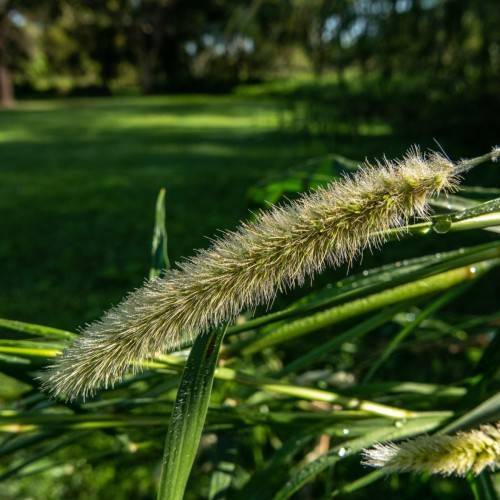
elephant grass
Pennisetum purpureum
Cycle:
Perennial
Watering:
Average
Hardiness Zone:
8 - 10
Flowers:
Flowers In Autumn
Sun:
Full sun
Leaf:
Yes
Growth Rate:
High
Maintenance:
Moderate
Salt Tolerant:
Yes
Invasive:
Yes
Care Level:
Medium
watering
Elephant grass should be watered moderately and consistently. Watering this grass at least once a week is recommended. If the weather is hotter, water 2-3 times a week for optimal growth. During fire danger season, water every 2-3 days to help reduce the chance of a wildfire. It is best to water this plant deeply and thoroughly in the early morning, when the sun is not at its highest and the temperature is cooler. This will help avoid evaporation and lower the risk of overheating the soil. Water until the soil is saturated and there is runoff from the pot or plant bed. Keep in mind that elephant grass prefers moist soil, rather than overly wet soil. Do not let the soil dry out completely before watering your elephant grass as this can inhibit its growth. Check the soil often and if it is dry to the touch, add water. If the soil is still damp or wet, wait 1-2 days before adding any more water.
sunlight
Elephant grass (Pennisetum purpureum) should receive at least 8 hours of direct sunlight per day during its growing season (May to September). During the fall and winter months, elephant grass should receive a minimum of 4-6 hours of direct light each day. To ensure that the plant gets the necessary light exposure, it may be beneficial to place it in an area that will receive sun for as much of the day as possible. Additionally, during especially cold or cloudy days, an artificial grow light may be used to supplement the natural light that the plant receives.
pruning
Elephant grass (Pennisetum purpureum) requires minimal pruning. Since it is a grass, cutting should be done just prior to the start of the growing season. This helps to promote healthy growth and ensures the plant maintains its attractive, green foliage. The grass should be pruned back to a height of about 6 to 8 inches. This should be done at the end of winter or before the start of spring. To promote further growth, pruning can also be done lightly in the middle of the summer, but it isn't necessary. Light pruning should also be done in the fall to help the grass come back strong in the spring.
